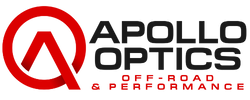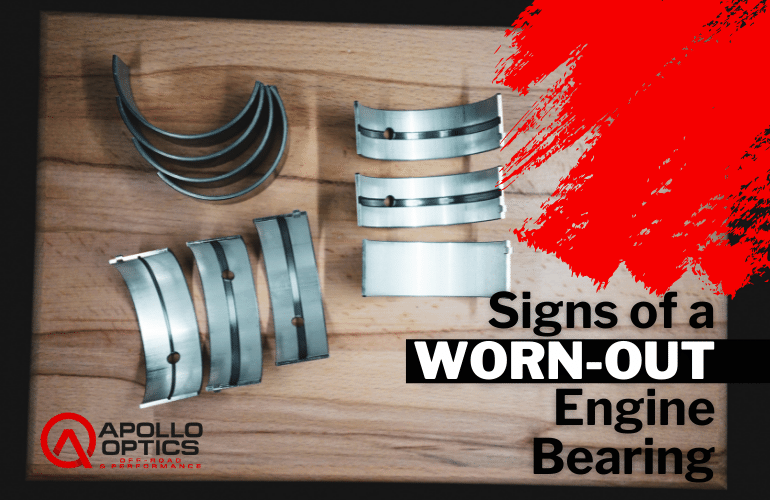 At the heart of every standard internal combustion engine resides a crankshaft, which rotates as a byproduct of combustion. Force is transferred to the crankshaft itself through a set of pistons and connecting rods, all of which are situated within the engine block. While an engine’s rotating assembly is quite robust by nature, the bearings that facilitate its rotation do, on occasion, wear out.
At the heart of every standard internal combustion engine resides a crankshaft, which rotates as a byproduct of combustion. Force is transferred to the crankshaft itself through a set of pistons and connecting rods, all of which are situated within the engine block. While an engine’s rotating assembly is quite robust by nature, the bearings that facilitate its rotation do, on occasion, wear out.
When an engine’s bearings begin to wear heavily, a number of issues arise. Bearing wear ultimately necessitates overhaul, but if left unchecked, can actually spell disaster. However, the first step to addressing such a concern is rooted in one’s ability to recognize the onset of bearing-related issues.
What Role Do Engine Bearings Play?
An engine’s crankshaft serves as the main point of output for engine power. As a particular cylinder reaches its power stroke, its piston and connecting rod are driven downward, thereby imparting rotational force upon the crankshaft. This force, in a cumulative fashion, is transferred from the crankshaft through a vehicle’s transmission.
The crankshaft is also responsible for driving an engine’s camshaft, by way of a timing chain, or by timing gears in certain diesel engines. The camshaft then manipulates the engine’s valves, in turn facilitating the intake of air and expulsion of exhaust gases.
An engine’s crankshaft has two points of external contact, both of which rely upon the use of bearings. These two points of contact are at the crankshaft’s main journals/engine block and rod journals/connecting rods. The bearings found at each of these points of contact maintain proper component alignment, prevent excess free play, and reduce rotational friction.
The following is a description of each type of crankshaft-related bearing.
Main Bearings
An engine’s main bearings (along with its thrust bearings) retain the crankshaft within its intended position and allow it to rotate freely as force is imparted upon it by each corresponding piston and connecting rod. These bearings are a two-piece design and placed between the block’s housing bore and crankshaft journal. Bearing caps are used to hold the bearings in place and are secured by bolts. The number of main bearing cap bolts that each cap uses varies from one engine to the next. While many engines feature a total of two bolts per cap, some high-performance engines utilize four or even six bolts per cap.
Rod Bearings
An engine’s rod bearings reduce friction and allow the attached connecting rods to rotate as needed in order to transfer their force to the crankshaft itself. Like the engine’s main bearings, connecting rod bearings are a two-piece design, with each individual piece known as a bearing shell. These bearings are located between the big end of an engine’s connecting rods, and their corresponding rod journals, or crankpins. Rod bearings are held in place by a rod cap and rod cap bolts.
The Anatomy of an Engine Bearing
As with any engine component, lower end bearings are designed to exhibit a lengthy service life under typical operating conditions. Engine bearings consist of a bi-metal or tri-metal construction and are typically made up of aluminum, copper, steel, or babbitt.
Both main and rod bearings obtain lubrication from oil supplied by an engine’s oil pump. Lubrication of this nature is absolutely essential to prevent metal-to-metal contact that would quickly lead to bearing failure.
Main and rod bearings are supplied through oil holes in the crankshaft. Many upper main bearings also feature oil grooves, which facilitate a certain degree of lubricant retention. An engine’s camshaft bearings and journal surfaces are also supplied oil through crankcase derived oil passages. This allows a film of oil to form upon all bearing surfaces, thereby preventing the erosion of metal-bearing material.
In order to maximize bearing longevity, it is essential to heed the manufacturer’s recommendations regarding oil viscosity. Auto manufacturers base these recommendations upon the known bearing clearances of their engines, as well as the exact machining and composition of the bearings in place.
Signs of Worn-Out Engine Bearings
The failure of an engine bearing can manifest in numerous ways, each of which poses its own distinct symptoms. The following are several of the most common signs of worn-out engine bearings, which certainly warrant closer examination.
Knocking Noises
While any irregular engine noise is cause for concern, the sudden onset of a knocking noise is especially troubling. As rod bearings begin to wear, excess free play often presents itself in the most vital of locations. If a rod bearing wears to a sufficient degree, the connecting rod itself can actually strike, or “knock”, against the engine’s crankshaft. Knocking of this nature will be reflective of engine RPM in pace and might be worse in the moments following engine start-up.
Low Oil Pressure
As previously mentioned, an engine directs oil flow to the cam and crankshaft through a series of oil passages. When an engine’s vital bearings are intact, and in ideal conditions, this flow of oil takes place at a steady rate. However, exceedingly worn bearings allow the oil to seep at an uncontrolled rate, largely bypassing its intended destination. This oil then gravity drains back to the sump. This bypassing of oil is most often noted by a relative loss of oil pressure. Such symptoms are typically worse at idle when the oil pump is rotating at its lowest rate of speed.
Metal Shavings in Oil
As bearings wear, any eroded material falls away, ultimately ending up in the engine’s oil. These metal shavings typically float around until the oil itself is discarded at the engine’s next service interval. In severe cases, these metal shavings can be observed by the naked eye during an oil change. Many late-model vehicles feature magnetic drain plugs, which collect such shavings. If your vehicle is not equipped with a drain plug of this type, many parts retailers offer aftermarket magnetic drain plug/gasket combos for sale. Alternatively, an oil sample can be taken and sent off for lab analysis if bearing failure were to be expected.
Copper-Tinged Oil
Copper is often used as the second of three layers in bearings of a tri-metal construction. When bearings of this nature wear to a substantial degree, copper will collect within the engine’s oil. These copper deposits can often be observed when servicing a vehicle. Copper contaminated oil will carry a distinct shimmer, which can be seen under direct light. If such contamination has taken place, a quick glance with a bright shop light will often tell the tale.

